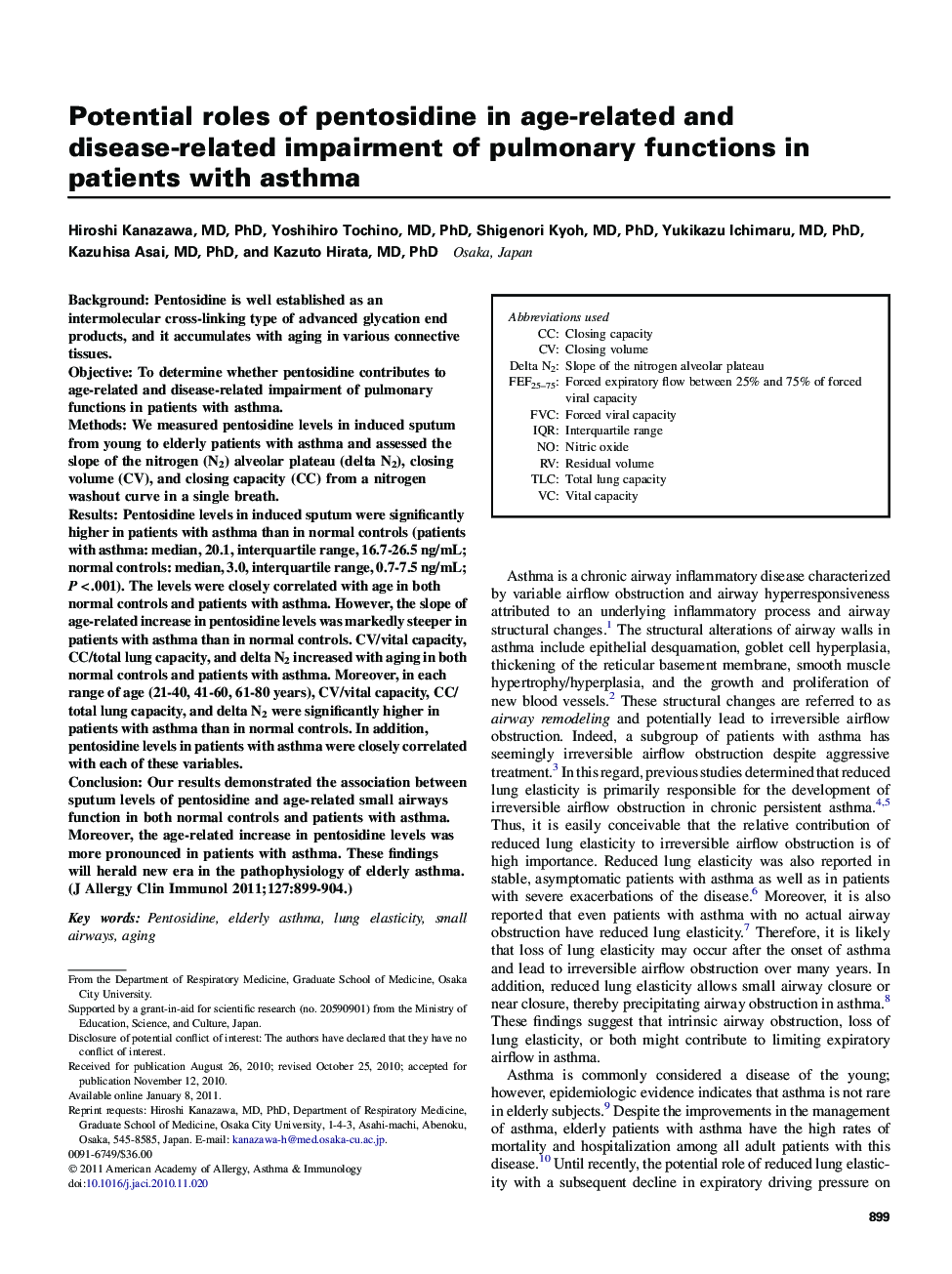| Article ID | Journal | Published Year | Pages | File Type |
|---|---|---|---|---|
| 3198906 | Journal of Allergy and Clinical Immunology | 2011 | 6 Pages |
BackgroundPentosidine is well established as an intermolecular cross-linking type of advanced glycation end products, and it accumulates with aging in various connective tissues.ObjectiveTo determine whether pentosidine contributes to age-related and disease-related impairment of pulmonary functions in patients with asthma.MethodsWe measured pentosidine levels in induced sputum from young to elderly patients with asthma and assessed the slope of the nitrogen (N2) alveolar plateau (delta N2), closing volume (CV), and closing capacity (CC) from a nitrogen washout curve in a single breath.ResultsPentosidine levels in induced sputum were significantly higher in patients with asthma than in normal controls (patients with asthma: median, 20.1, interquartile range, 16.7-26.5 ng/mL; normal controls: median, 3.0, interquartile range, 0.7-7.5 ng/mL; P < .001). The levels were closely correlated with age in both normal controls and patients with asthma. However, the slope of age-related increase in pentosidine levels was markedly steeper in patients with asthma than in normal controls. CV/vital capacity, CC/total lung capacity, and delta N2 increased with aging in both normal controls and patients with asthma. Moreover, in each range of age (21-40, 41-60, 61-80 years), CV/vital capacity, CC/total lung capacity, and delta N2 were significantly higher in patients with asthma than in normal controls. In addition, pentosidine levels in patients with asthma were closely correlated with each of these variables.ConclusionOur results demonstrated the association between sputum levels of pentosidine and age-related small airways function in both normal controls and patients with asthma. Moreover, the age-related increase in pentosidine levels was more pronounced in patients with asthma. These findings will herald new era in the pathophysiology of elderly asthma.
